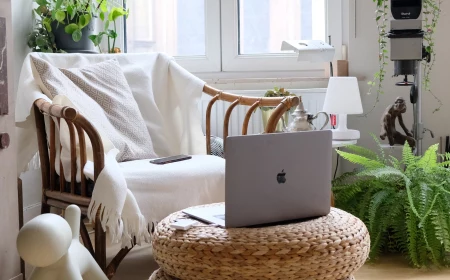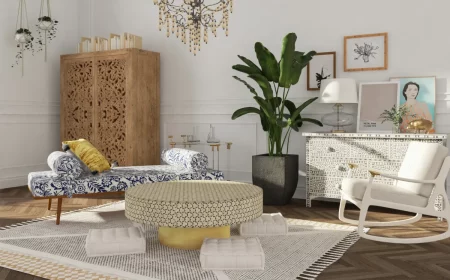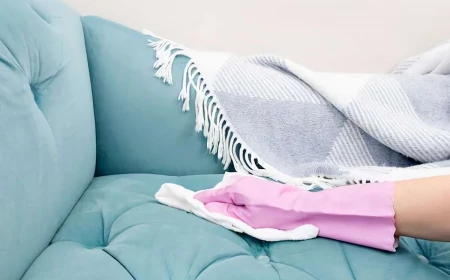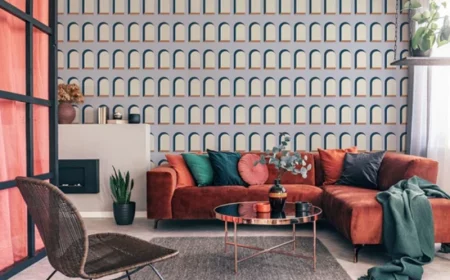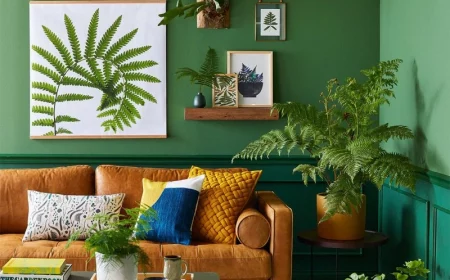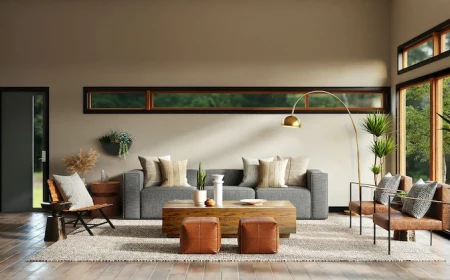Your Living Room Isn’t Working. Here’s How to Actually Fix It.
I’ve spent a lot of time in a lot of living rooms. Some are echoey and empty, others are so full of stuff you can barely move. And honestly, the biggest problem isn’t a lack of style—it’s a lack of a plan. People see a cool sofa online, buy it, and then try to build a room around it. It’s a recipe for frustration.
In this article
- First Things First: The Order of Operations
- Getting the Layout and Flow Right
- Let’s Talk Color (It’s More Than Just Paint)
- Smart Ideas for Renters
- Texture and Materials: The Secret to a Cozy Room
- The Furniture: Where to Spend and Where to Save
- Lighting: The Most Overlooked Element
- Finishing Touches: How to Avoid Common Mistakes
- Inspiration:
A truly great living room, one that feels good for years, isn’t about chasing trends. It’s built on a foundation of timeless principles that are all about how we actually live, move, and relax in a space. This isn’t just theory; it’s the practical stuff I’ve picked up on job sites from carpenters, electricians, and the folks who actually build the furniture. We’re going to skip the fleeting fads and get right to the good stuff: the layout, the color, the materials, and the light. These are the things that make a room work.
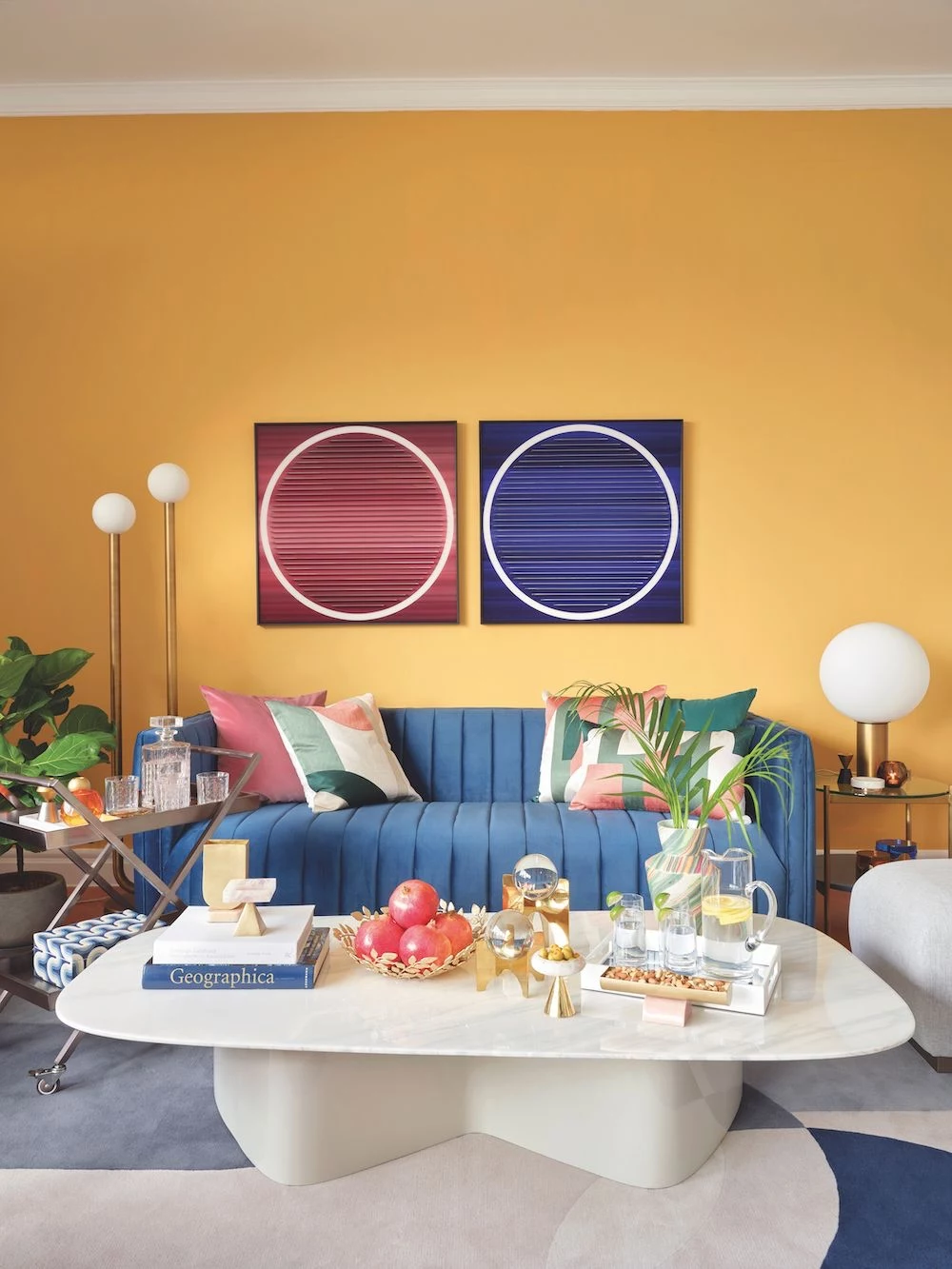
First Things First: The Order of Operations
Before you even think about paint chips, let’s get the order right. Getting this wrong is where most people get overwhelmed and make costly mistakes. Here’s the sequence the pros use:
- Layout and Flow: Figure out how the room needs to function first. Where do people walk? Where will the main seating go? This is non-negotiable.
- Anchor Pieces: Choose your main, big-ticket items next. This is primarily your sofa and maybe a large area rug. These pieces define the room’s color palette and style more than anything else.
- Paint and Color:Now you can pick a paint color. It’s so much easier to find a paint that complements your sofa than it is to find a sofa that perfectly matches a pre-existing wall color.
- Lighting and Other Furniture: Next, layer in your lighting, coffee tables, side tables, and storage.
- The Final Layer: Lastly, bring in the personality with textiles (pillows, throws), art, and decor.
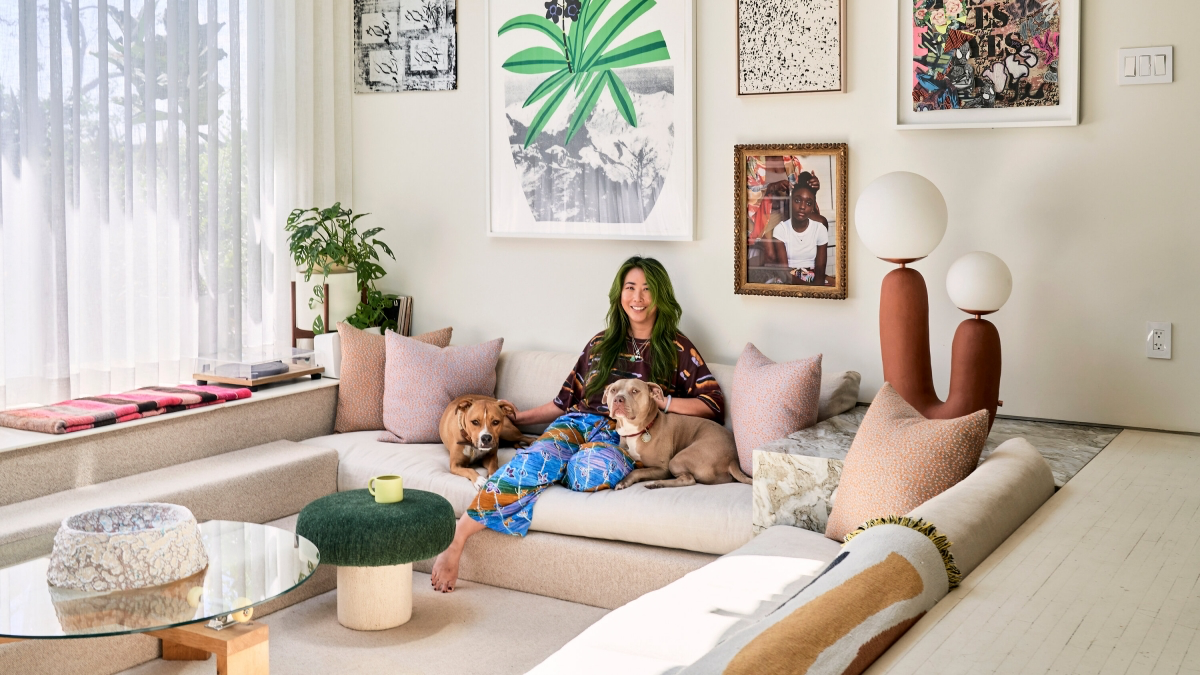
Getting the Layout and Flow Right
Before you buy a single thing, you have to understand the room’s bones. The most common mistake I see is furniture that’s just too big for the space. A gorgeous sofa is totally useless if it blocks a walkway or makes the room feel like a cramped shoebox.
Think about the paths you take. You need to get from the hallway to the sofa, or from a chair to the window, without weaving through an obstacle course. As a general rule, major walkways need at least 36 inches of clear space. For smaller paths, like the one between your sofa and the coffee table, you can get away with about 18 inches. Any less than that and you’ll be doing that awkward side-shuffle forever.
Here’s a trick that has saved my clients thousands of dollars. Seriously, do this:
- Find the dimensions of the sofa or chair you’re eyeing online.
- Grab a roll of blue painter’s tape and tape that exact shape onto your floor.
- Live with that tape outline for a day or two. Walk around it. Can you open that nearby cabinet door? Does it feel ridiculously tight? You’ll know almost immediately if it’s a bad fit.
By the way, if your room is a long, narrow “bowling alley” shape, don’t just line furniture up against the walls. The key is to create zones. You can create a main conversation area in the middle by floating the sofa away from the wall. Then, behind the sofa, add a slim console table. This visually breaks up the space and creates a cozy, defined zone. Use area rugs to clearly mark where one zone ends and another begins.
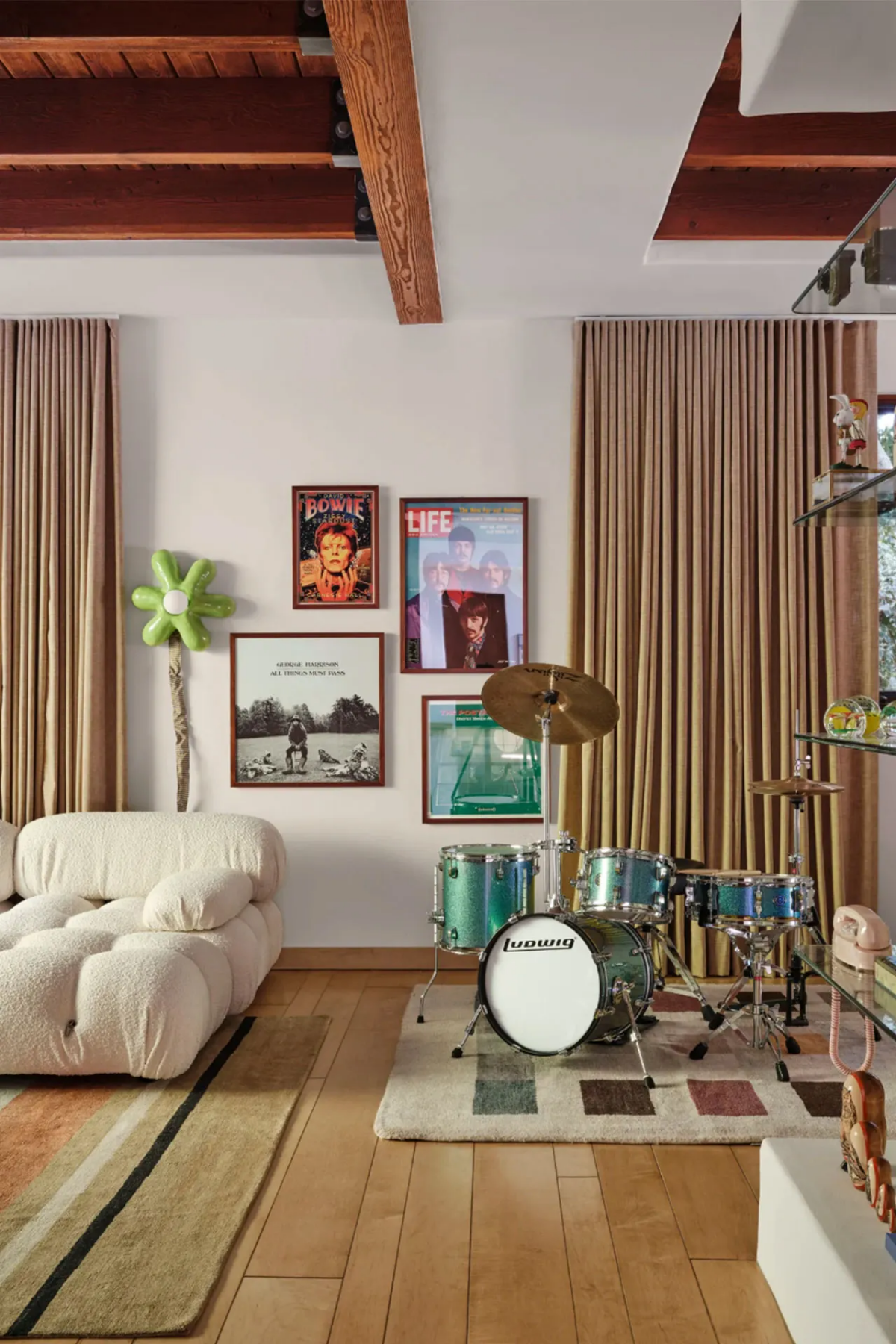
Let’s Talk Color (It’s More Than Just Paint)
Color sets the mood, but a pro-level color scheme is also about balance. A really helpful guideline is the 60-30-10 rule. It’s a simple way to keep your palette from getting chaotic.
- 60% is your dominant color. This is usually your walls. It’s the backdrop for everything else.
- 30% is your secondary color. Think of your sofa, curtains, or a large rug. It’s the next most prominent color.
- 10% is your accent color. These are the fun pops of color in throw pillows, art, and little decorative objects.
Oh yeah, and light changes everything. When choosing paint, look for a number on the can called the LRV, or Light Reflectance Value. It’s a scale from 0 (absorbs all light) to 100 (reflects all light). For a small, dark room, you’ll want a higher LRV—maybe 60 or more—to help bounce light around. For a super sunny room, a lower LRV can actually absorb some of that glare and feel more restful.
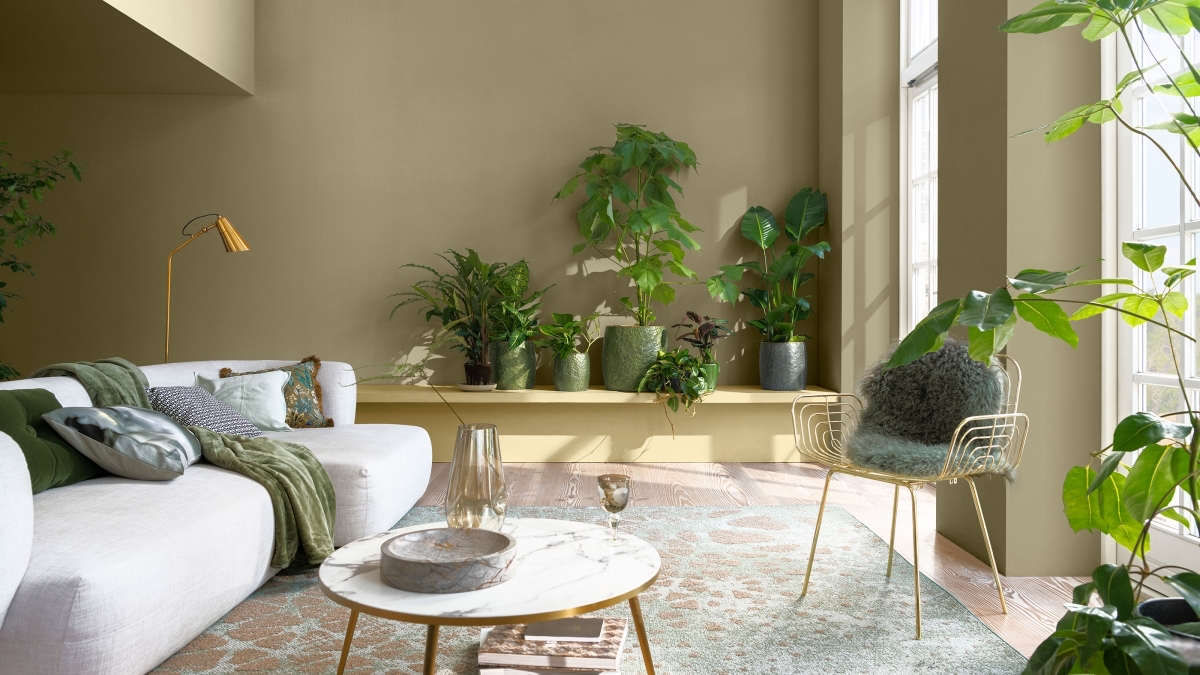
And please, please do not pick a paint color from a tiny chip under the fluorescent lights of a hardware store. Buy a few sample pots, paint large (2×2 foot) squares on a couple of different walls, and see how they look in the morning, at noon, and at night with the lamps on. That lovely beige can turn into a sad, sickly green under the wrong light. This step is not optional.
Quick tip: For living room walls, an eggshell or satin finish is your best bet. It has a soft, elegant look but is still durable enough to be wiped down. And always look for low-VOC or zero-VOC (Volatile Organic Compounds) paints to keep your indoor air quality healthier.
Smart Ideas for Renters
Feeling left out because you can’t paint or drill holes? Don’t be. You have more options than you think for making a huge impact.
- Peel-and-Stick Everything: Modern peel-and-stick wallpaper and tiles are amazing. They can create a stunning accent wall behind your TV or sofa and come off without a trace when you move out.
- Plug-In Lighting: You don’t need an electrician to get stylish lighting. Plug-in wall sconces can flank a sofa or a mirror, giving you that custom look without touching the wiring.
- Tension Rods: Want to hang curtains without drilling? Use a high-quality tension rod. They are surprisingly strong and can add softness and color to a room instantly.
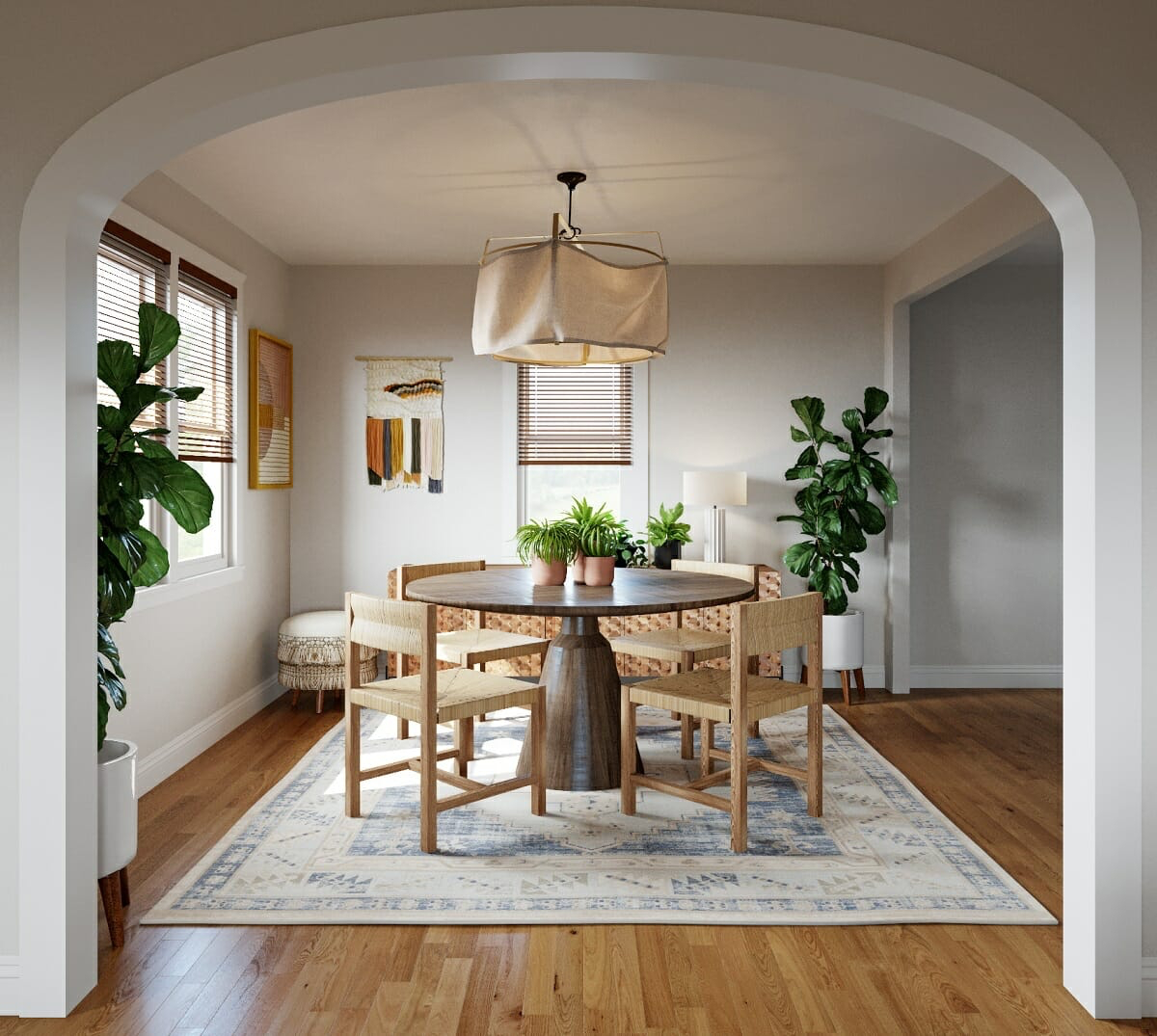
Texture and Materials: The Secret to a Cozy Room
A room with only smooth, flat surfaces will always feel a bit cold and sterile. Texture is what makes a space feel real and inviting. Think about layering different feelings: the roughness of a jute rug, the softness of a velvet pillow, the cool smoothness of a marble coaster. It’s this mix that creates depth.
I love mixing earthy, organic materials like wood, linen, and stone with a few refined touches. A little bit of metal goes a long way. A lamp with a brass base or a mirror with a thin black metal frame adds a touch of sophistication. Don’t be afraid to mix metals, either—blackened steel and soft brass look fantastic together.
Budget tip: Can’t spring for a solid wood coffee table that costs thousands? Look for high-quality wood veneer. It gives you the same beautiful look and great durability for a fraction of the price, often in the $300 to $600 range. Just make sure the core is something solid like MDF or plywood, not cheap particleboard.
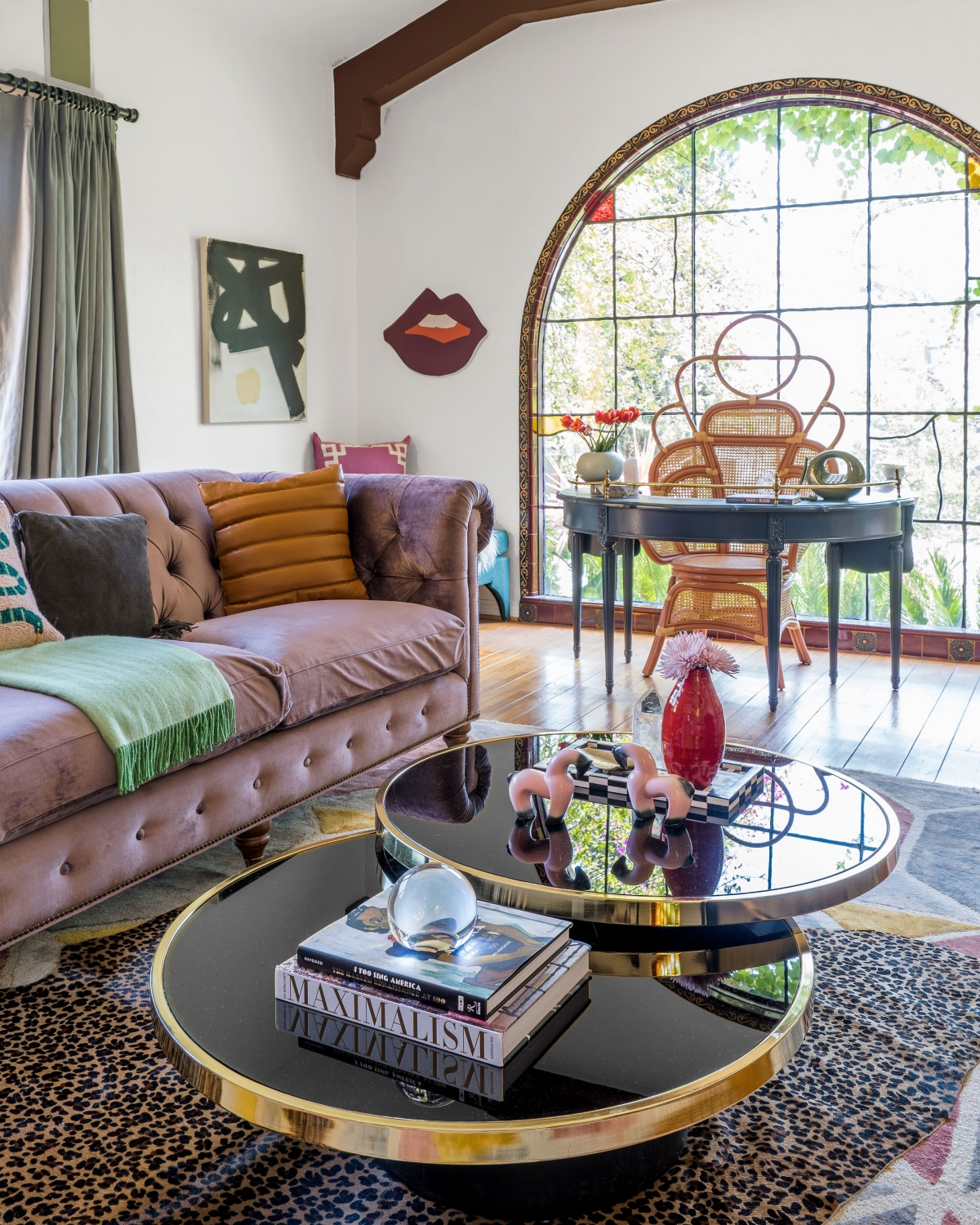
The Furniture: Where to Spend and Where to Save
Okay, let’s talk money. Your furniture is where the bulk of your budget will go, and the sofa is the king. This is where you should invest. A cheap sofa will feel lumpy and sad in a year or two. You’ll end up buying another one, which costs more in the long run.
So, how much does a good sofa cost? To be frank, a quality new sofa with a solid frame and decent support will likely start around $1,500 to $2,000, and it can go way up from there. If you see a brand new three-seater for $500, you should be very, very skeptical about what’s inside it.
When you’re shopping, you need to ask about what’s under the fabric:
- The Frame: The best ones are made from kiln-dried hardwood. This means the wood has been dried to prevent warping and cracking. You want to avoid frames made of particleboard or soft woods like pine—they are guaranteed to break or sag.
- The Suspension: This is what holds you up. The absolute gold standard is called “8-way hand-tied” springs, but it’s very expensive. A much more common and still great option is sinuous spring construction (they look like big S-shaped wires). The thing to avoid is simple webbing or mesh, which will stretch and sag in no time.
- The Cushions: High-density foam is a great, supportive choice that holds its shape. Down-filled cushions are super luxurious but require constant fluffing. A fantastic compromise is a foam core wrapped in a layer of down or polyester fiber. You get structure and softness.
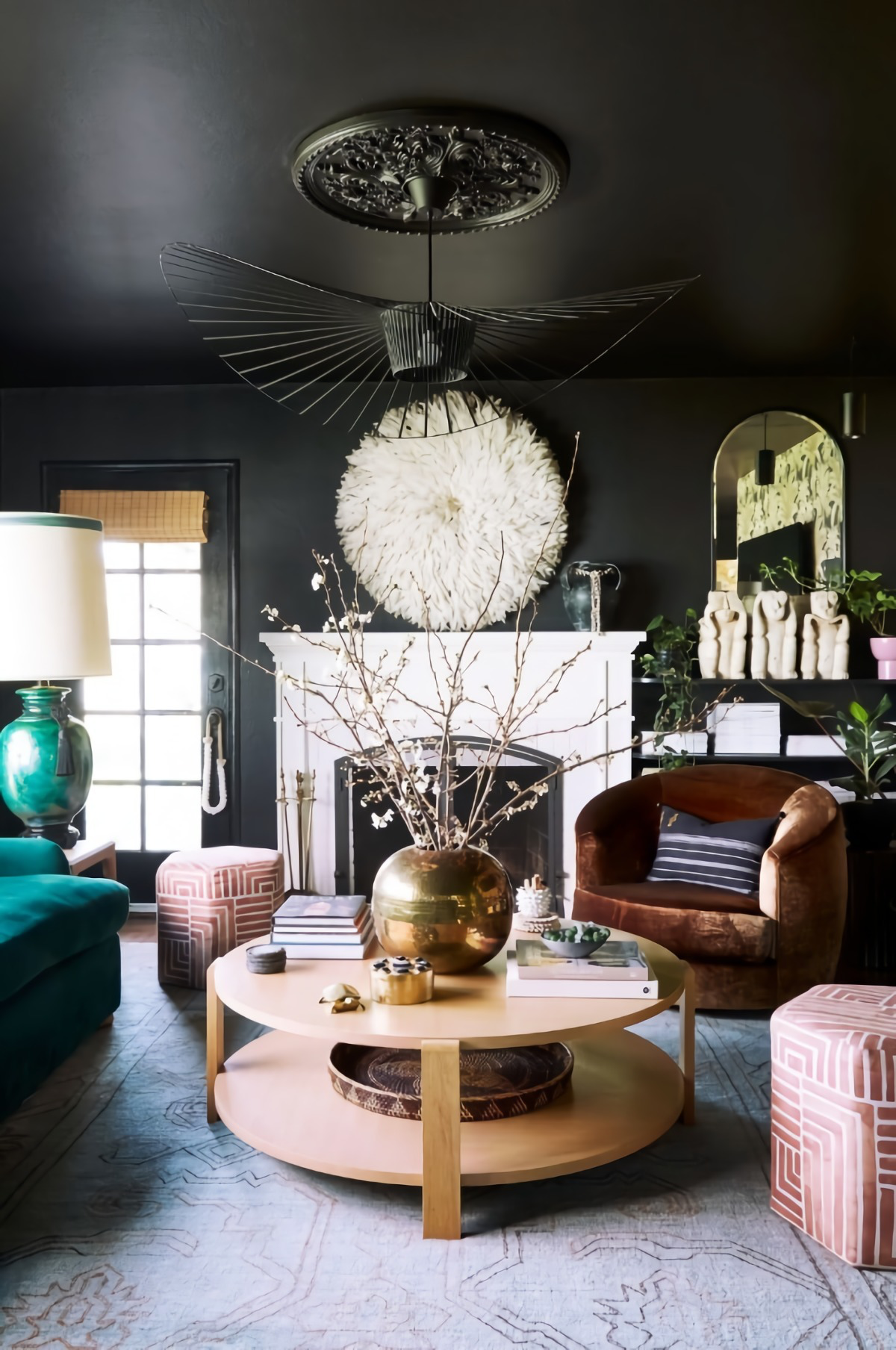
Lighting: The Most Overlooked Element
Good lighting is EVERYTHING. The biggest sin in living room design is relying on a single, harsh overhead light. You need to create layers of light.
- Ambient Light: This is your general, room-filling light. It might be a ceiling fixture or recessed lights. Whatever it is, put it on a dimmer switch. This is the single best, most affordable upgrade you can make, maybe $25 for the switch itself. It gives you complete control over the mood.
- Task Light: This is focused light for doing stuff. A floor lamp by your favorite reading chair, or a small table lamp for your crossword puzzle.
- Accent Light: This is the fun stuff. It’s light that highlights things you love, like a piece of art or a beautiful plant. It adds drama and depth.
Here’s your homework for tonight: go look at the light bulbs in your living room lamps. Are they casting a cool, bluish, office-like light? Go to Home Depot or order a pack of LED bulbs online in the 2700K to 3000K range. The “K” stands for Kelvin, and this range produces a warm, cozy, inviting glow. It’s a $15 change that will make your room feel 100% better instantly.
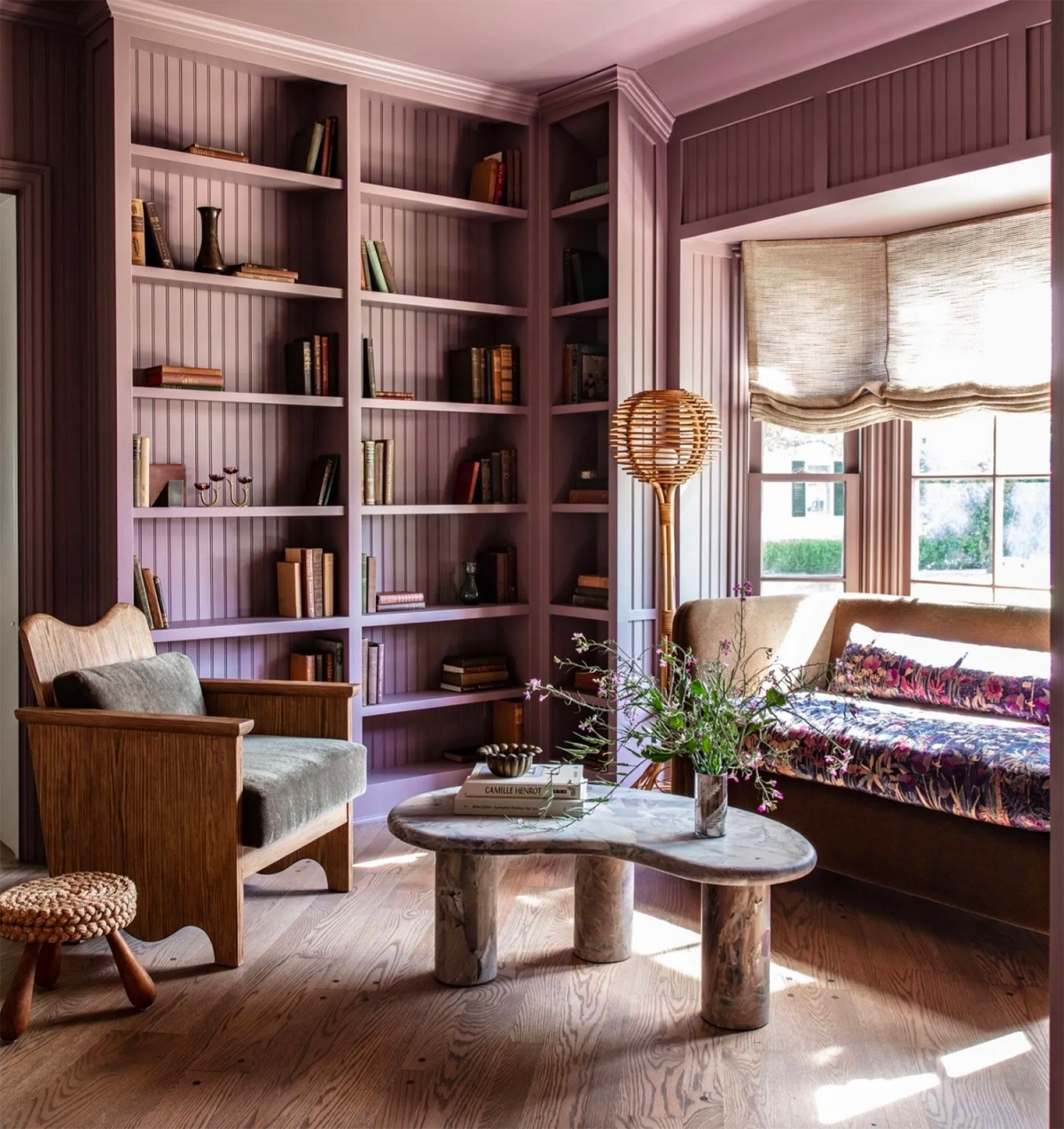
Heads up! While you can change a light bulb, any work involving wall wiring—like installing a new fixture or adding a dimmer—needs a licensed electrician. Faulty wiring is a serious fire hazard. Don’t risk it.
Finishing Touches: How to Avoid Common Mistakes
The final layer is what makes a room yours. But it’s also where things can go wrong. Here are the most common mistakes I see:
- The Postage Stamp Rug. A tiny rug floating in the middle of your floor makes the whole room look smaller and disconnected. A good rule of thumb is that the rug should be large enough for at least the front legs of your sofa and all your chairs to rest comfortably on it.
- Art Hung Way Too High. People tend to hang art as if they’re decorating for giants. The center of your artwork should be at eye level, which is generally about 57 to 60 inches from the floor. When hanging art above a sofa, leave about 6 to 8 inches of blank space between the top of the sofa and the bottom of the frame.
- Ignoring the Windows. Window treatments aren’t just decorative. Curtains add softness and color, while blinds and shades offer crucial light control and privacy. A simple roller shade for privacy layered with decorative curtain panels for style is a classic, winning combination.
- Forgetting to Edit. Once all the main pieces are in, take a step back. A room needs breathing space. Sometimes the most powerful design move is to take one thing away. An over-cluttered space never feels relaxing.
Putting together a living room is a marathon, not a sprint. It’s about making a series of thoughtful choices that genuinely support your life. Good flow, balanced color, layered textures, and great lighting aren’t just fancy design terms—they are the building blocks of a comfortable home that will feel right for a very long time.
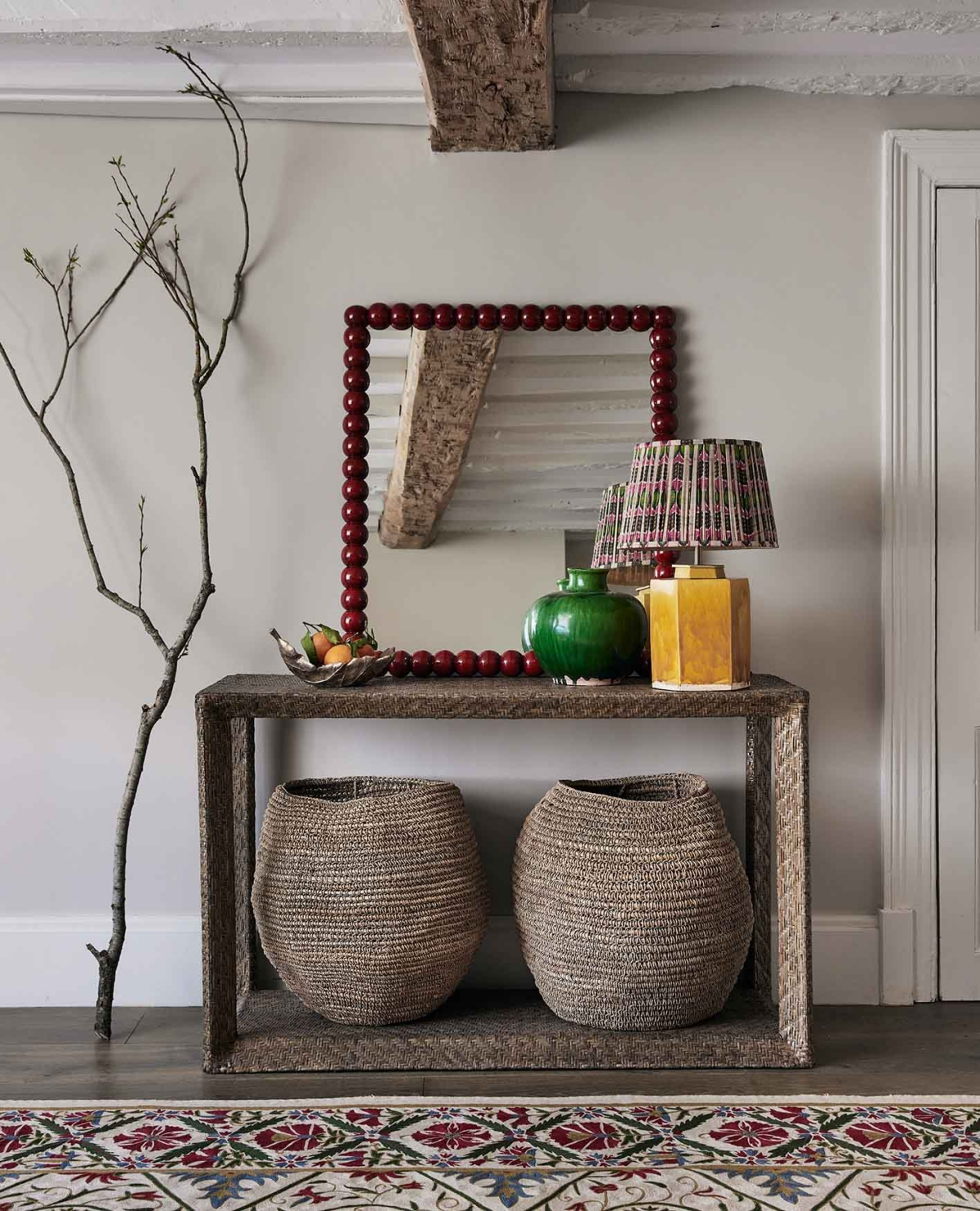
Inspiration:
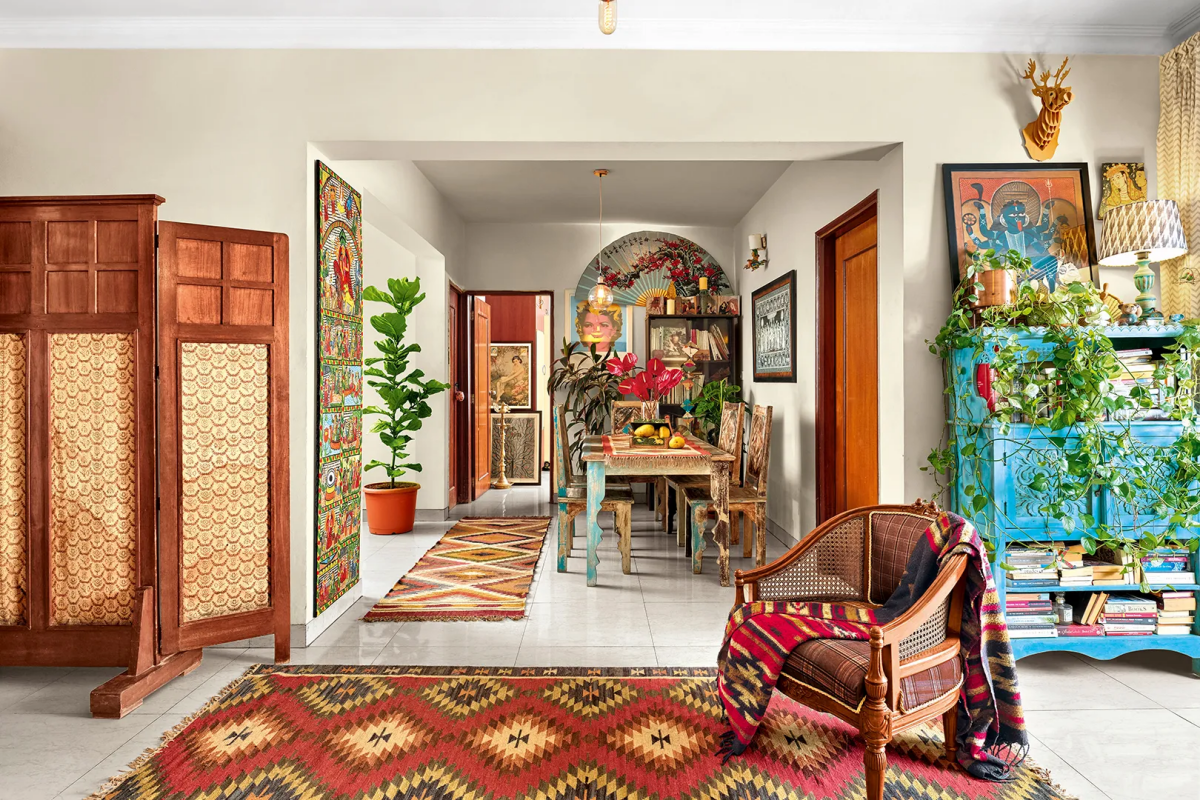
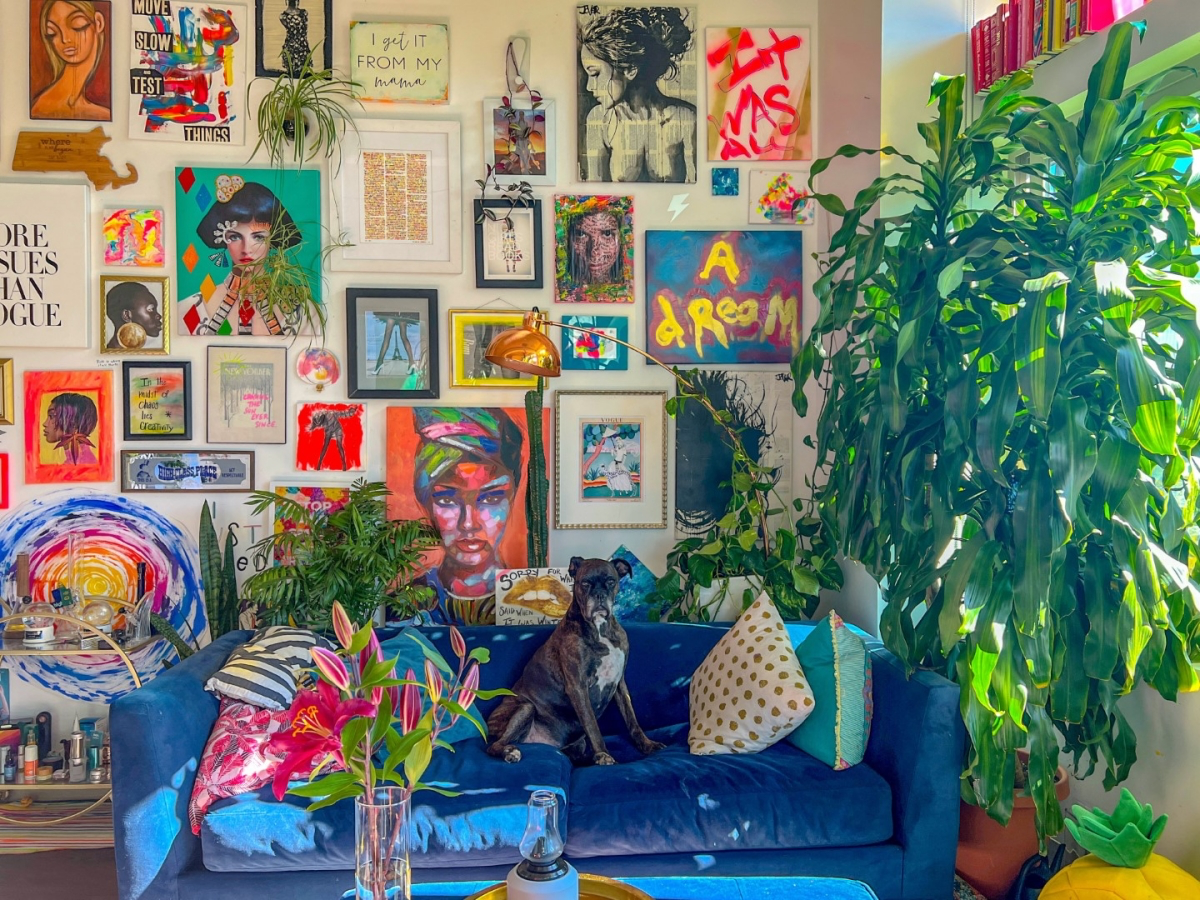
- Ensure your area rug is large enough for at least the front legs of your sofa and main chairs to rest on it.
- Leave a border of about 18 inches (45 cm) of bare floor between the rug and the walls of the room.
- In a very large space, use a rug to define the conversational area, not to cover the entire floor.
The secret? A well-sized rug anchors the furniture, making the entire seating arrangement feel cohesive and intentional, not like a collection of floating pieces.
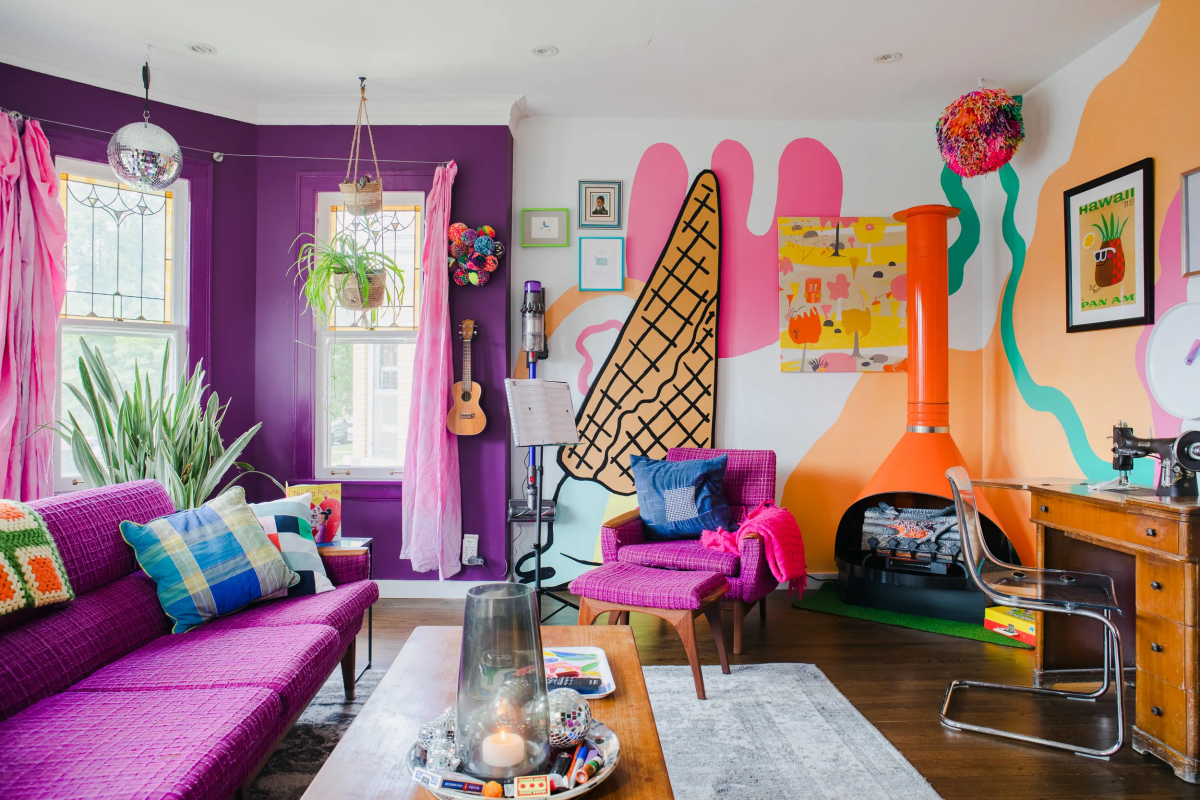
The human eye perceives spaces with varied textures as more interesting and luxurious. A room with only smooth, flat surfaces can feel sterile and unwelcoming, regardless of the color scheme.
This is why layering is key. Think beyond color and consider the feel of things. Combine a sleek leather armchair with a chunky knit throw, place a smooth ceramic vase on a rough-hewn wooden console, or mix velvet and linen pillows on your sofa. This tactile variety adds immense depth and sophistication.

How do I choose the right lighting temperature?
For a living room, aim for light bulbs in the 2700K to 3000K range. This is the “warm white” spectrum that mimics the golden glow of evening light, creating a cozy and relaxing atmosphere. Anything higher (like 4000K+) ventures into “cool white,” which is better suited for kitchens or workspaces as it can feel clinical and harsh in a relaxation zone. Check the “Kelvin” rating on the box; it makes all the difference.
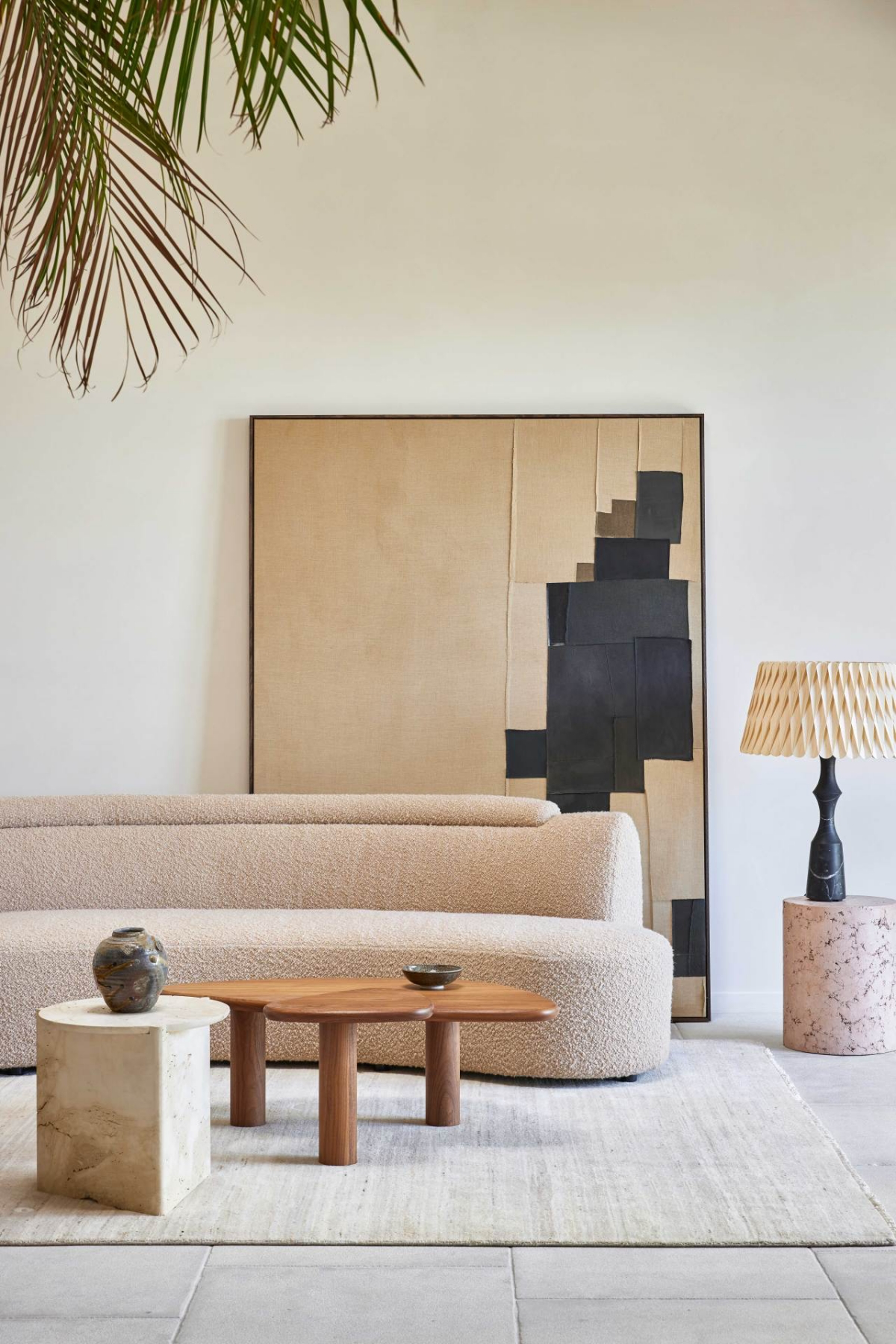
Important point: Your art should relate to your furniture, not the ceiling. A common mistake is to hang pictures too high. As a rule of thumb, the center of the artwork (or the center of a gallery wall grouping) should be at eye level, approximately 57 inches (145 cm) from the floor. When hanging art above a sofa, leave just 5-8 inches of space between the top of the sofa and the bottom of the frame.

Don’t underestimate the power of the “final layer.” A great living room plan can fall flat without personality. Before you buy generic decor, consider framing something meaningful. A beautifully patterned remnant of wallpaper from a brand like Farrow & Ball, a high-quality black-and-white print of a personal photo, or even a vintage silk scarf can become a unique and conversation-starting piece of art.
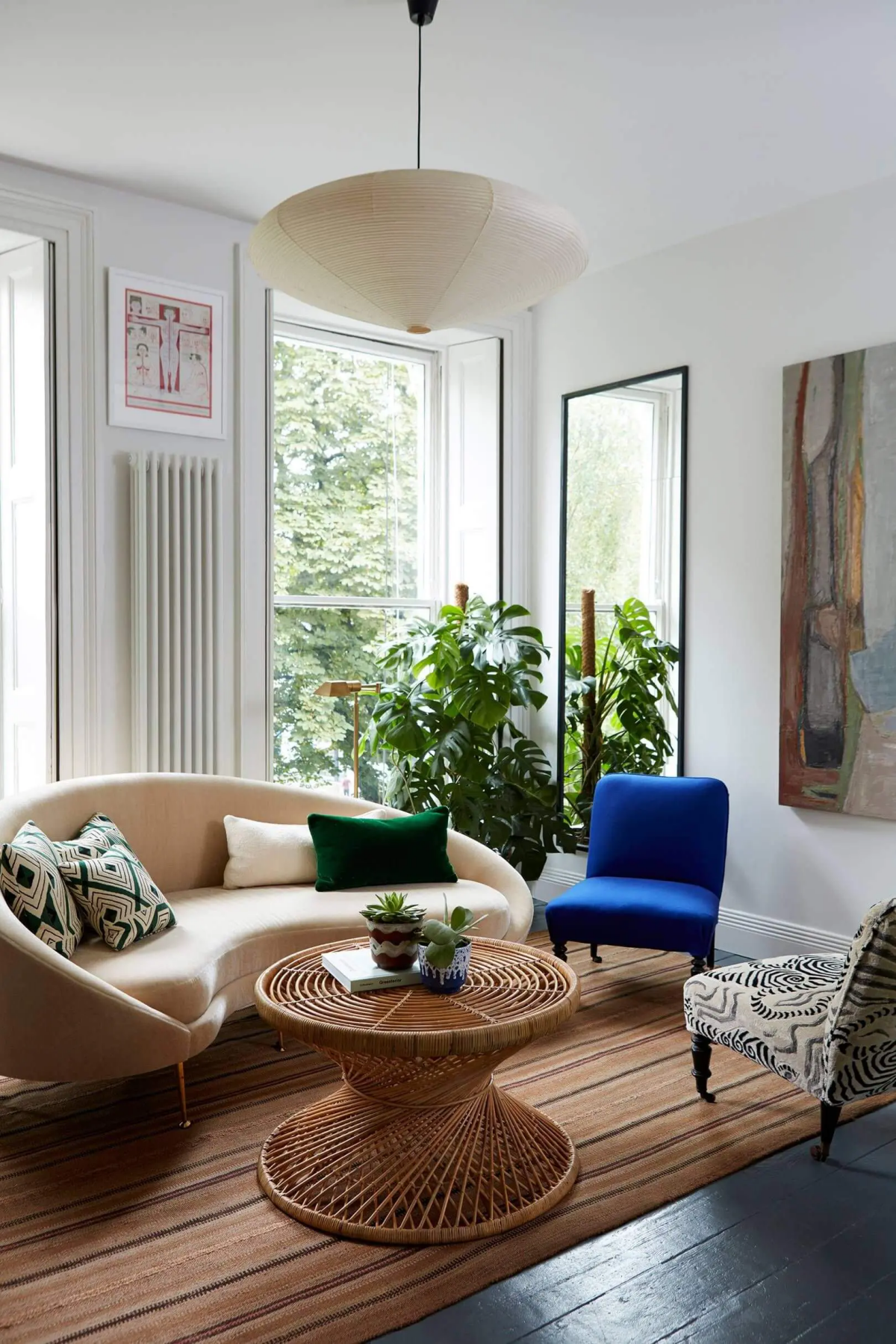
According to a study by the University of Surrey, exposure to natural light in the home is linked to better sleep and overall well-being.
Maximize the light you have. Instead of heavy drapes, consider sheer linen curtains that offer privacy while still letting light filter through. A strategically placed mirror, especially opposite a window, can effectively double the amount of natural light in the room, making it feel larger and more vibrant.
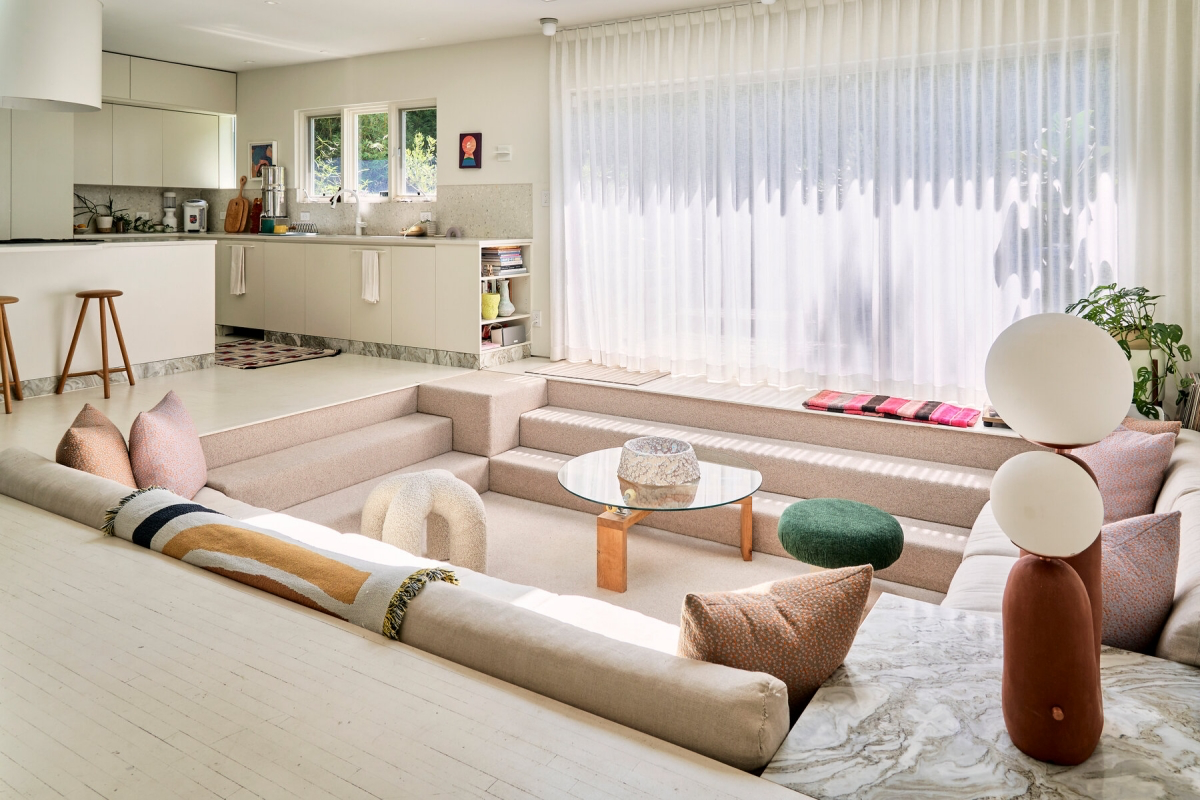
Performance Fabric Sofa: Brands like Crypton or Sunbrella offer fabrics engineered to be virtually indestructible. They resist stains, moisture, and fading, making them a worry-free investment for homes with kids, pets, or a love for red wine.
Natural Fiber Sofa: Materials like linen or pure cotton offer a soft, breathable, and classic aesthetic. They develop a relaxed patina over time but are more susceptible to staining and wrinkling, requiring more careful use.
For most busy households, today’s high-quality performance fabrics offer the best balance of style and practicality.
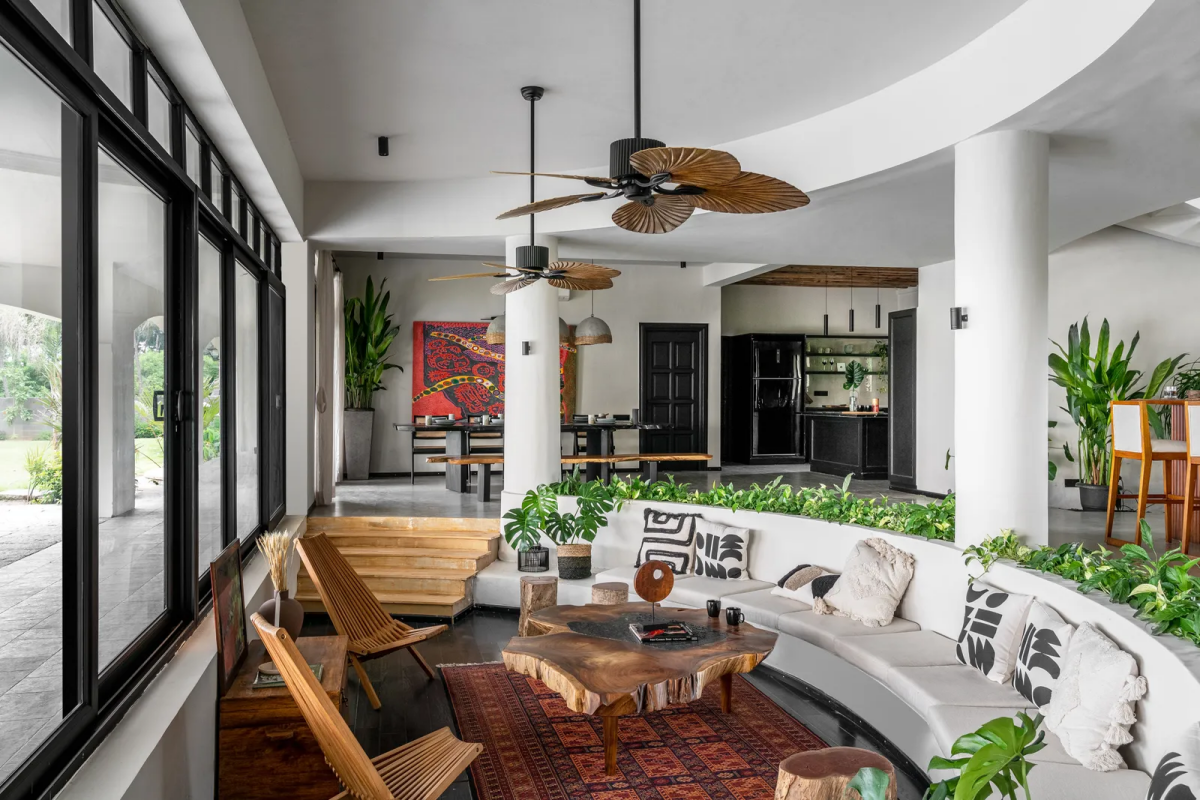
To create a truly ambient and functional space, think of your lighting in three layers. This approach is used by all professional lighting designers.
- Ambient: The overall illumination, usually from a central fixture or recessed lights.
- Task: Focused light for specific activities, like a reading lamp next to a chair or a floor lamp by the sofa.
- Accent: Softer, directed light used to highlight features like artwork, plants, or architectural details. Dimmers are your best friend here.
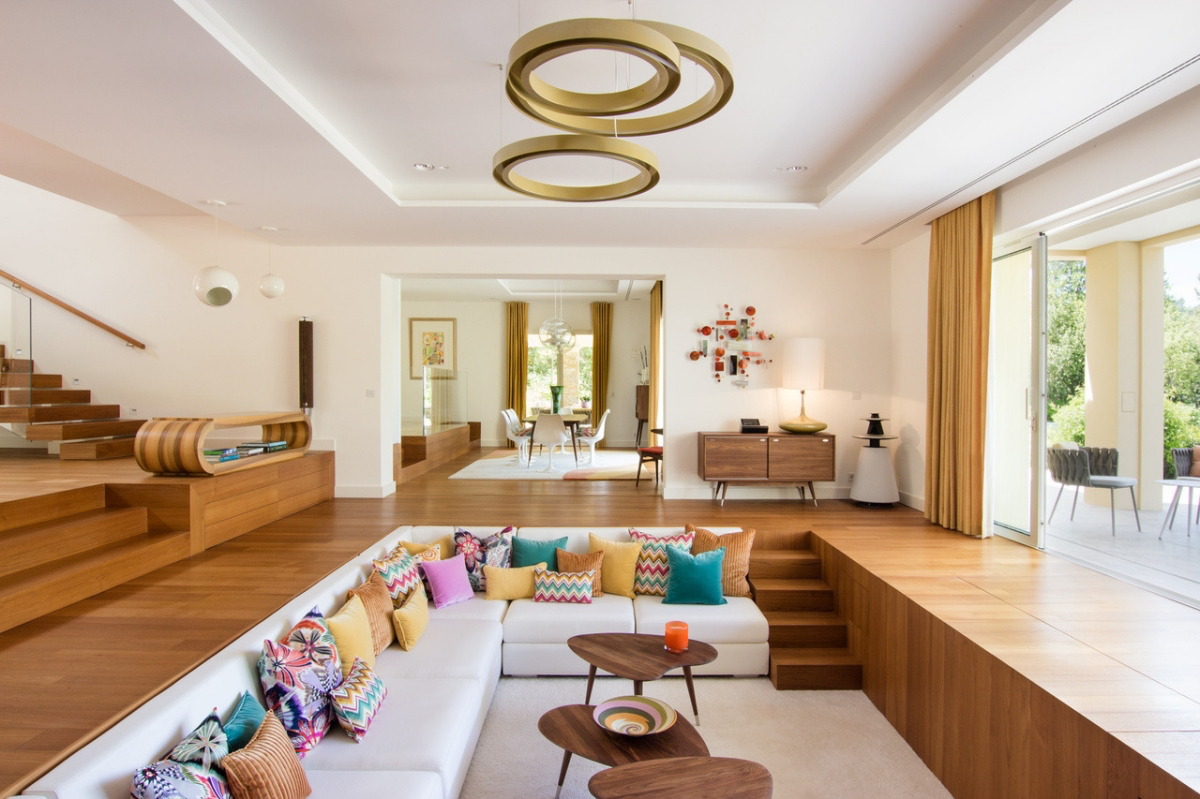
If your room feels rigid and boxy, the solution might be in its shapes. The trend towards curved furniture—sofas with soft silhouettes, round coffee tables, arched cabinets—has staying power because it directly addresses this. Curves break up straight lines, encourage better flow, and create a softer, more welcoming and conversational environment. A single piece, like a circular ottoman from a brand like Article or Crate & Barrel, can be enough to disrupt the geometry.
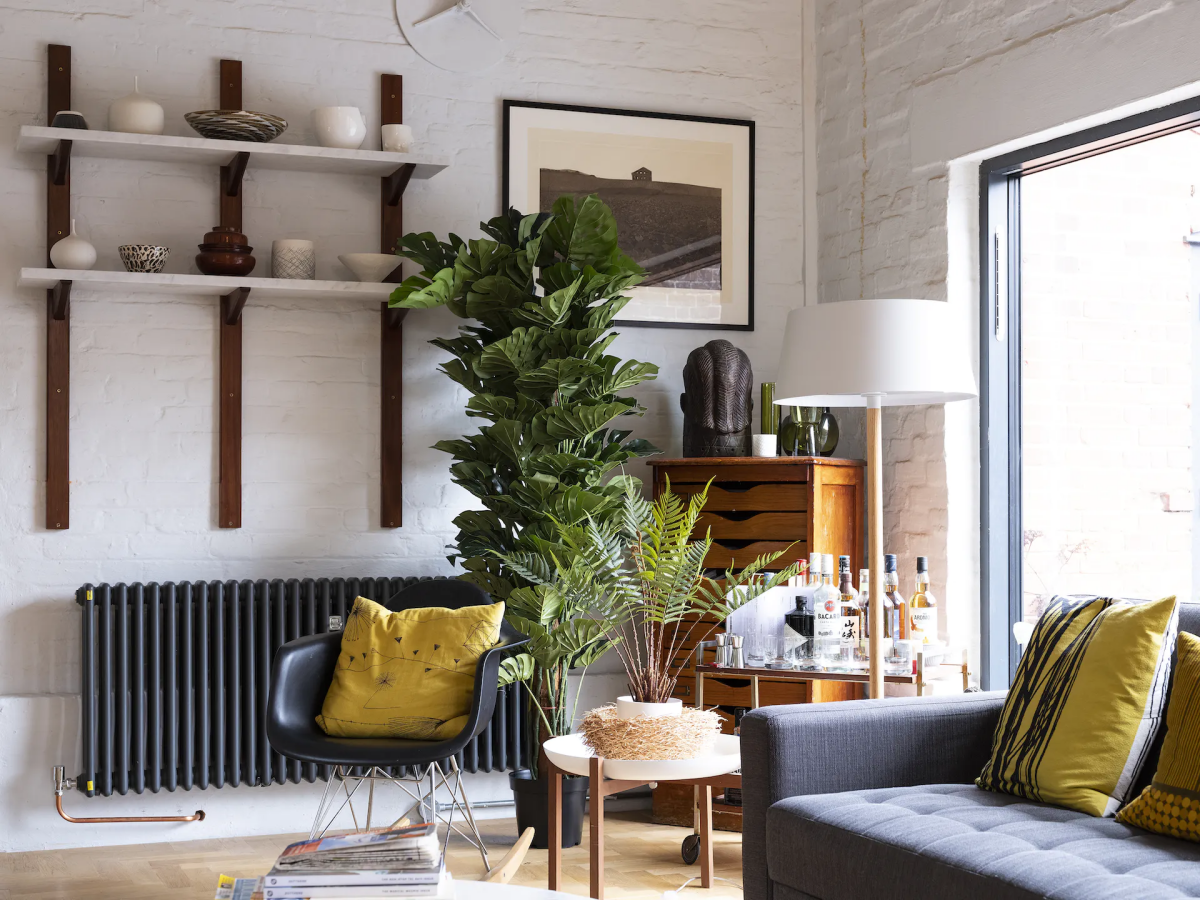
- Adds instant architectural interest.
- Provides a perfect ledge for art, photos, or small objects.
- Can cleverly hide cables for a wall-mounted TV.
The secret? A simple picture ledge or shallow floating shelf. Installing one (or a series of them) is a weekend DIY project that adds incredible character and a customizable display space without the bulk of a traditional bookcase. The classic ‘MOSSLANDA’ from IKEA is a perfect, budget-friendly starting point.
Did you know that mixing metals is no longer a design faux pas? In fact, it’s encouraged.
The key is to choose one dominant metal—like the black on your window frames or cabinet pulls—and then add one or two accent metals in smaller doses. For example, pair matte black fixtures with touches of warm brass or champagne bronze in a picture frame or lamp base. This creates a curated, collected-over-time feel.

